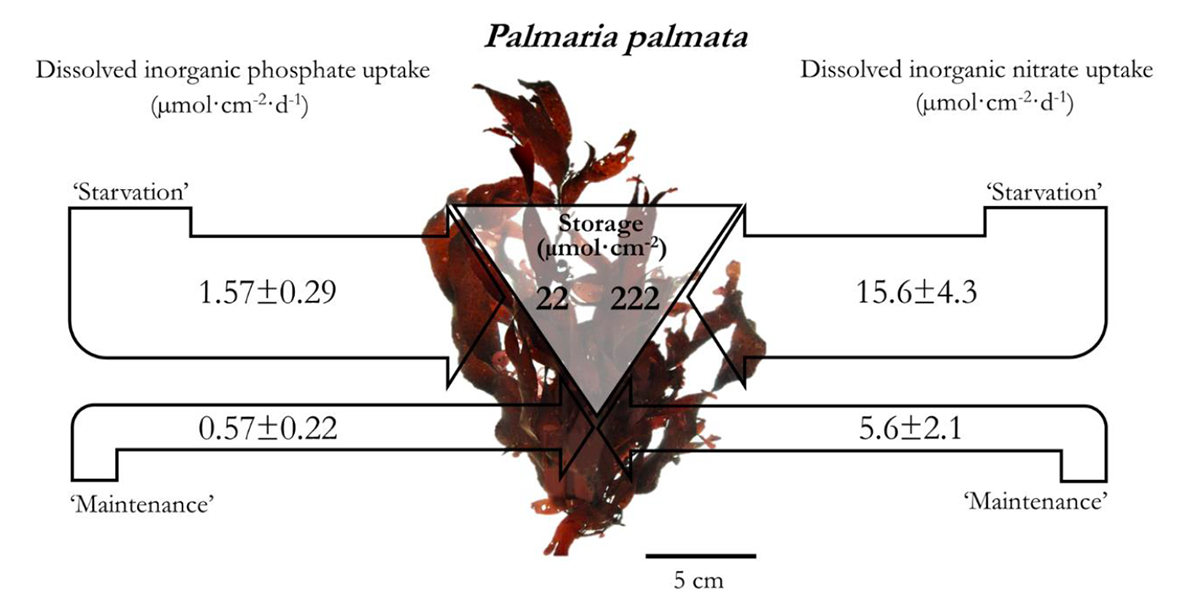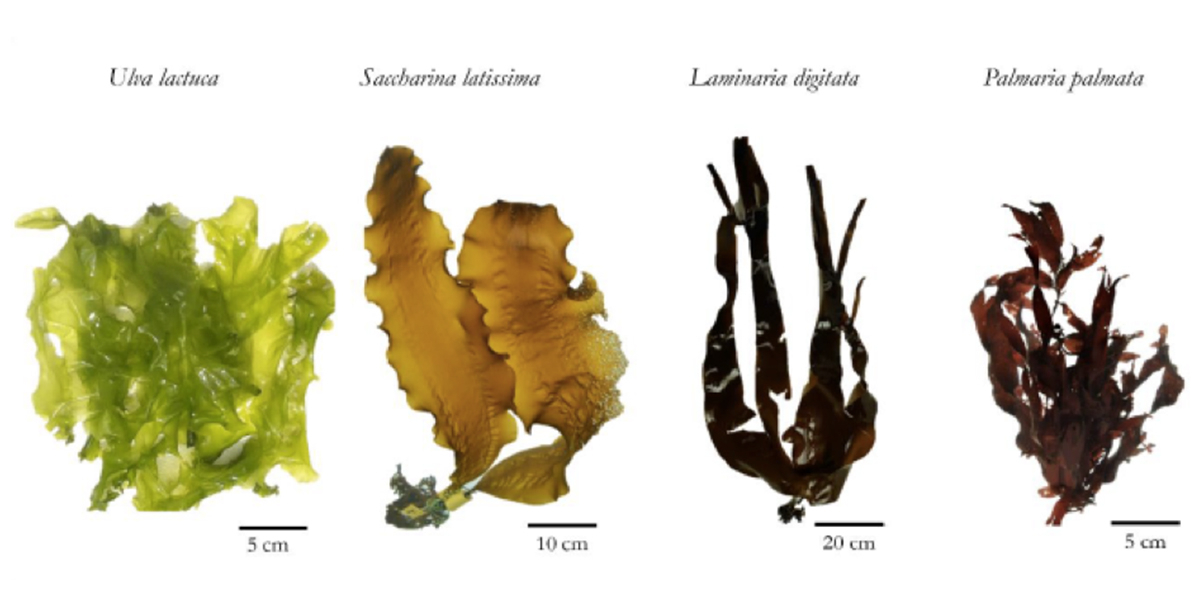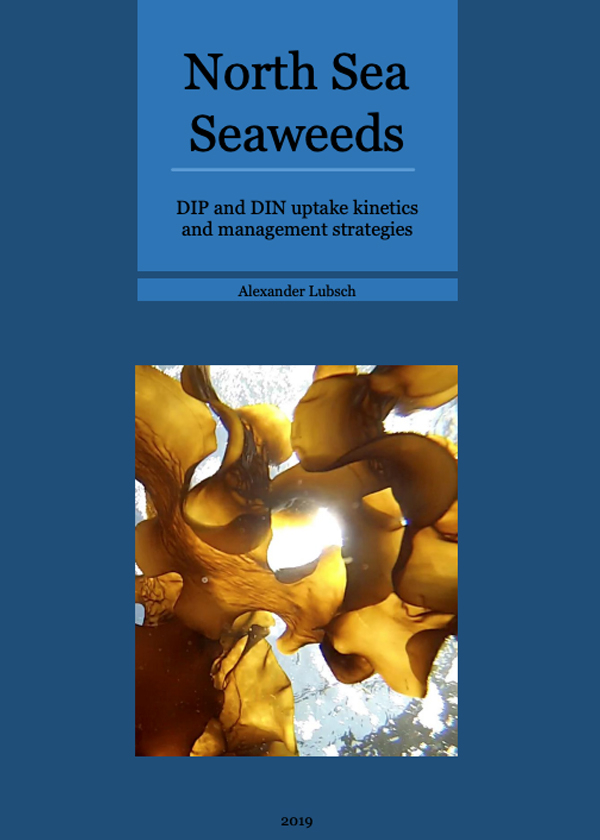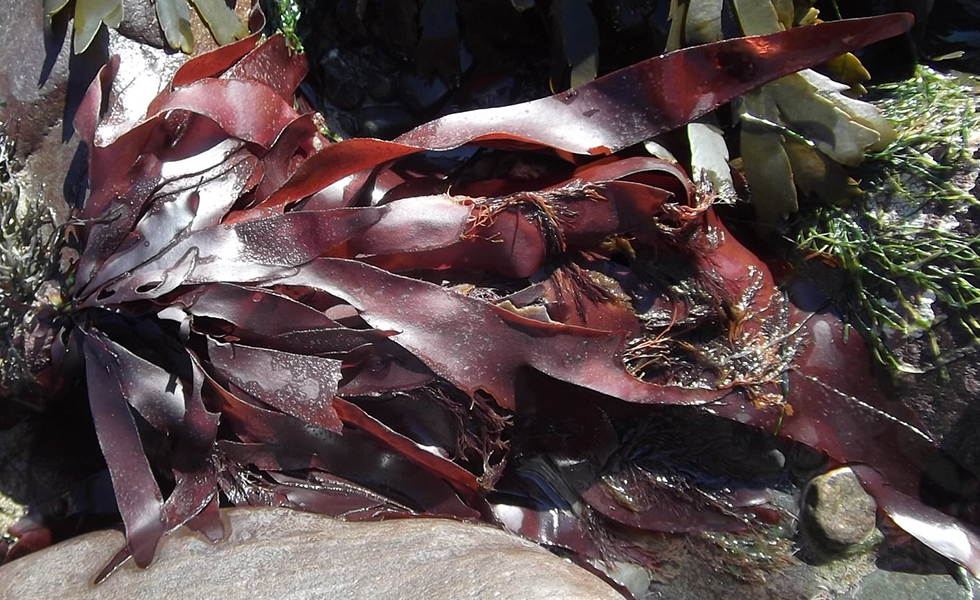Palmaria palmata
Seaweeds are important primary producers. An essential macronutrient for maintaining the metabolism and growth of these autotrophs is dissolved inorganic phosphorus (DIP), along with nitrogen (N). Understanding the demand and management strategy for nutrients by seaweeds is economically and ecologically of central importance as it allows for optimal manipulation in cultivation and biofiltration facilities, as well as it opens opportunities to forecast ecological impacts of nutrient limitation and shifts in limitation from one element to another, which can significantly affect the internal composition, physiology and growth of seaweeds.

Study
This study gives insight into the DIP and DIN uptake dynamics, as well as internal storage capacities of DIP and DIN in the red seaweed Palmaria palmata . Young sporophytes were exposed to a range of nominal DIP concentrations (0 - 6 µmol·L-1 ) and non-limiting DIN concentration (50 µmol·L-1 ) in a ‘pulse-and-chase’ approach over 20 days to quantify DIP and DIN uptake kinetics, all described as a function of SA for comparability. The photosynthetic efficiency Fv/Fm was followed for an additional 2 weeks, and based on the response in Fv/Fm to nutritional stress, the internal storage capacity for DIP and DIN was estimated. Finally, the total dissolved protein- and total dissolved carbohydrate concentration in the sporophytes, exposed to different DIP concentrations were determined after 5 weeks exposure.
Further insight
The results add to the physiological and ecological understanding of the red seaweed Palmaria palmata and opens further insight into ecological aspects of nutrient availability and interspecific competition. In addition, ecological effects on nutrient availability and shifts in limitations from one element to another can be estimated. The observed nutrient management strategies by Palmaria palmata differed substantially from those of Ulva lactuca , Saccharina latissima and Laminaria digitata. An elevated DIN uptake in Palmaria palmata was coupled to the availability of DIP, which consequently was mirrored by the total dissolved protein concentration, thus the nutritional value of the seaweed. Furthermore, the study showed an oscillating or rhythmic DIP and DIN uptake in weekly intervals, when sporophytes were exposed to saturating nutrient concentration. This rhythmic DIP and DIN uptake management can be related to a niche separation, which transferred to the interspecific competition for nutrients, can secure the coexistence of different seaweed populations competing for the same resources and by that species diversity in an ecosystem can be enhanced. To our knowledge, this nutrient uptake strategy was only been described for microalgae so far.
Our findings on uptake dynamics and growth rates support Palmaria palmata to be a potent species for bioremediation purposes in layered poly-cultures. Although there is a strong dependency on the availability of DIP for an efficient DIN uptake, the oscillating uptake of Palmaria palmata can be used to complement the DIP and DIN removal from the seawater by other seaweeds in bioremediation activities, for example, when integrated into Saccharina latissima cultivation in close proximity to fish farms, where high concentrations of N and P compounds can be found. DIP uptake rates in Palmaria palmata under VM outcompete those of the brown seaweed Saccharina latissima, while DIN uptake rates are comparable in both species.
Results
The results of this study are published in:
Lubsch, A. & Timmermans, K.R. 2019. J. Phycol.


